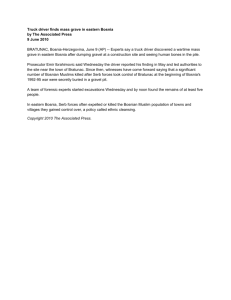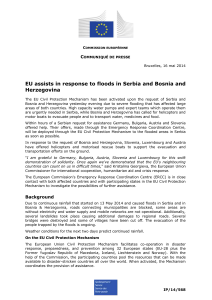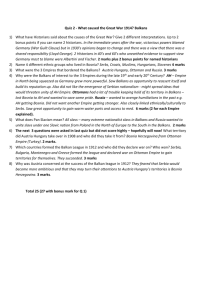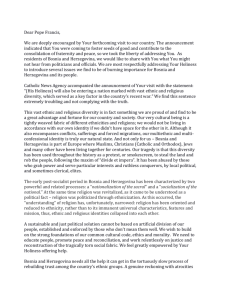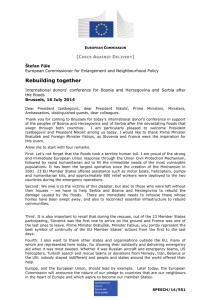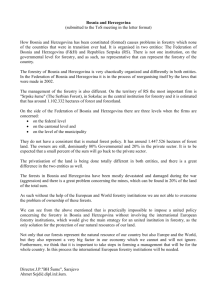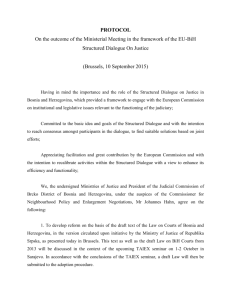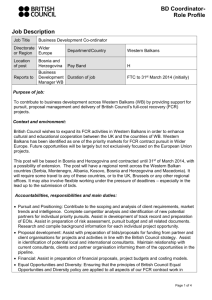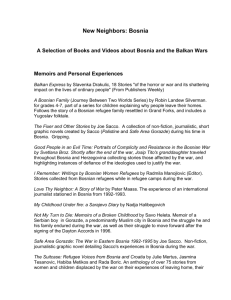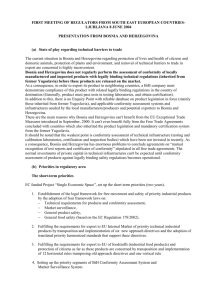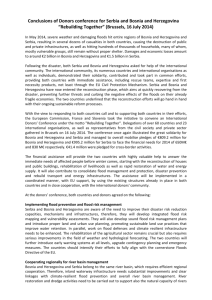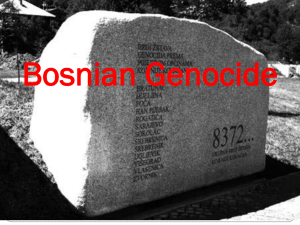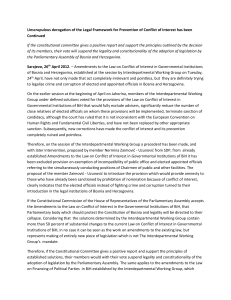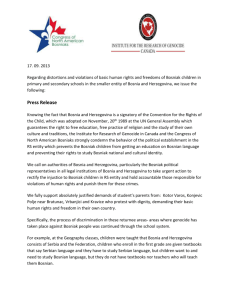Bosnia I Herzegovina from Illyricum until 1991
advertisement
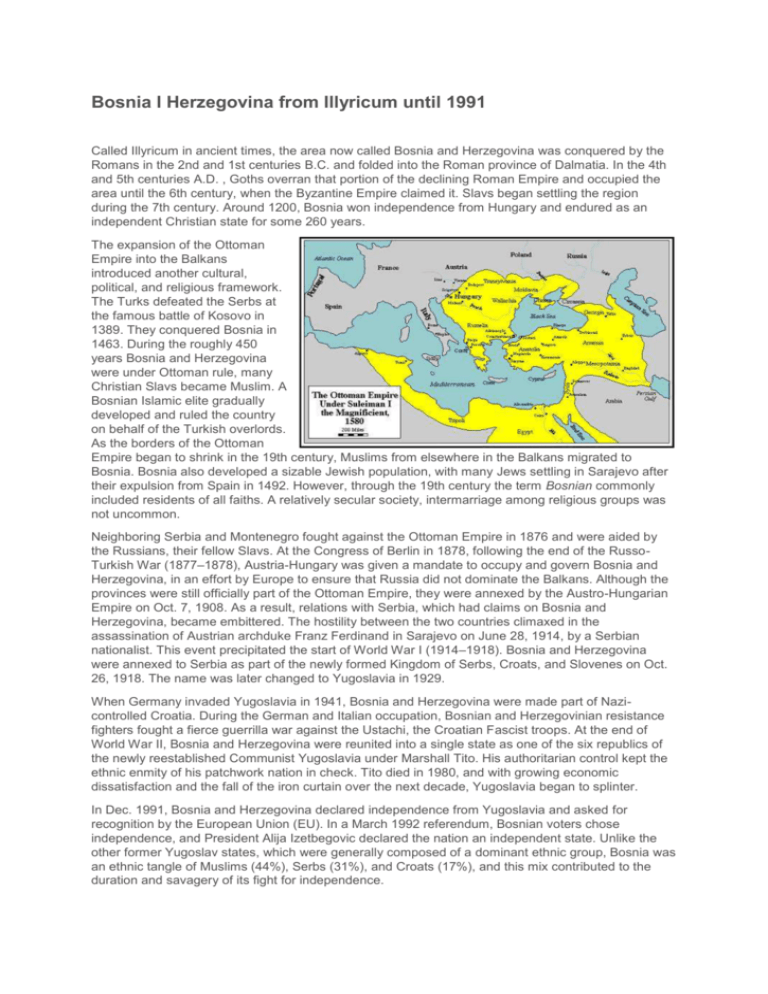
Bosnia I Herzegovina from Illyricum until 1991 Called Illyricum in ancient times, the area now called Bosnia and Herzegovina was conquered by the Romans in the 2nd and 1st centuries B.C. and folded into the Roman province of Dalmatia. In the 4th and 5th centuries A.D. , Goths overran that portion of the declining Roman Empire and occupied the area until the 6th century, when the Byzantine Empire claimed it. Slavs began settling the region during the 7th century. Around 1200, Bosnia won independence from Hungary and endured as an independent Christian state for some 260 years. The expansion of the Ottoman Empire into the Balkans introduced another cultural, political, and religious framework. The Turks defeated the Serbs at the famous battle of Kosovo in 1389. They conquered Bosnia in 1463. During the roughly 450 years Bosnia and Herzegovina were under Ottoman rule, many Christian Slavs became Muslim. A Bosnian Islamic elite gradually developed and ruled the country on behalf of the Turkish overlords. As the borders of the Ottoman Empire began to shrink in the 19th century, Muslims from elsewhere in the Balkans migrated to Bosnia. Bosnia also developed a sizable Jewish population, with many Jews settling in Sarajevo after their expulsion from Spain in 1492. However, through the 19th century the term Bosnian commonly included residents of all faiths. A relatively secular society, intermarriage among religious groups was not uncommon. Neighboring Serbia and Montenegro fought against the Ottoman Empire in 1876 and were aided by the Russians, their fellow Slavs. At the Congress of Berlin in 1878, following the end of the RussoTurkish War (1877–1878), Austria-Hungary was given a mandate to occupy and govern Bosnia and Herzegovina, in an effort by Europe to ensure that Russia did not dominate the Balkans. Although the provinces were still officially part of the Ottoman Empire, they were annexed by the Austro-Hungarian Empire on Oct. 7, 1908. As a result, relations with Serbia, which had claims on Bosnia and Herzegovina, became embittered. The hostility between the two countries climaxed in the assassination of Austrian archduke Franz Ferdinand in Sarajevo on June 28, 1914, by a Serbian nationalist. This event precipitated the start of World War I (1914–1918). Bosnia and Herzegovina were annexed to Serbia as part of the newly formed Kingdom of Serbs, Croats, and Slovenes on Oct. 26, 1918. The name was later changed to Yugoslavia in 1929. When Germany invaded Yugoslavia in 1941, Bosnia and Herzegovina were made part of Nazicontrolled Croatia. During the German and Italian occupation, Bosnian and Herzegovinian resistance fighters fought a fierce guerrilla war against the Ustachi, the Croatian Fascist troops. At the end of World War II, Bosnia and Herzegovina were reunited into a single state as one of the six republics of the newly reestablished Communist Yugoslavia under Marshall Tito. His authoritarian control kept the ethnic enmity of his patchwork nation in check. Tito died in 1980, and with growing economic dissatisfaction and the fall of the iron curtain over the next decade, Yugoslavia began to splinter. In Dec. 1991, Bosnia and Herzegovina declared independence from Yugoslavia and asked for recognition by the European Union (EU). In a March 1992 referendum, Bosnian voters chose independence, and President Alija Izetbegovic declared the nation an independent state. Unlike the other former Yugoslav states, which were generally composed of a dominant ethnic group, Bosnia was an ethnic tangle of Muslims (44%), Serbs (31%), and Croats (17%), and this mix contributed to the duration and savagery of its fight for independence.
